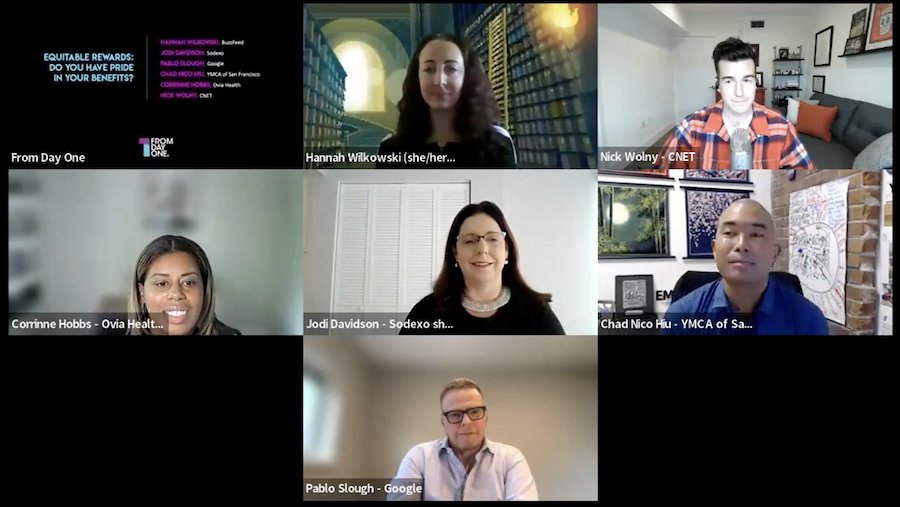Equitable Rewards: Do You Have Pride in Your Benefits?


Pride month is about celebrating and supporting diversity. One way to do that is to ensure your benefits plans are inclusive of different employees’ needs.
A good benefits package consistently ranks among the top three most important factors for job satisfaction, according to a survey from the Society for Human Resource Management. But for many people, the usual components of a benefits plan—401(k) match, paid time off, and/or professional development stipends—aren’t keeping up with what employees really want and need.
As a result, some companies are innovating their compensation offerings and winning over top talent along the way. Moreover, your existing employees may be shopping around for packages that better suit their needs, said Corrinne Hobbs, vice president of business development at Ovia Health, a family health benefits platform.
“Recently, Ovia did a survey of its members, and we learned that 91% of our members would consider a lateral move to a place with better family benefits and a family friendly culture,” Hobbs said. “That's really significant.” For BIPOC and LGBTQ+ employees, inclusive benefits packages can encourage well-being, better team retention, and a more diverse overall workforce.
Leading DE&I professionals weighed in at From Day One’s recent webinar titled, “Equitable Rewards: Do You Have Pride In Your Benefits?”
How to Tap Into What Employees Want
Employee Resource Groups (ERGs) are a great way for employees to connect with one another. But they can also be an accurate and authentic way to determine relevant next steps for your benefits development efforts, said Hannah Wilkowski, director of global benefits at BuzzFeed.
“ERGs are such a source of information. There's no better way to get to know your employees than to reach out to your ERGs and say, ‘How are we doing? Let's get a temperature check,’” Wilkowski said. She notes that leveraging existing connections within the organization can help you shape a relevant strategy. “It’s actually helped shift our trajectory for the next few years, just based on those conversations,” she added.

The needs and wants of most workforces have shifted in the wake of hybrid and fully remote setups. As such, stakeholders may need to revisit current policies and weigh what works best to meet employees’ needs, said Chad Nico Hiu, senior vice president of strategy, equity and impact at the YMCA of San Francisco, who also serves on the board of the Tyler Clementi Foundation.
“When we say hybrid, we mean like seven different things. And the nonprofit sector, part of what we are struggling with is [that] only some of us at leadership levels, myself included, even have even the option of being hybrid,” Hiu said. “Those who are at the top of the hierarchy are making decisions for those who are not, oftentimes without understanding or empathy. If we're asking questions of our employees, are we really ready to listen?”
The power dynamic brings up an important point: If employees don’t feel psychologically safe to begin with, they’ll be less likely to voice their needs and concerns, crippling an important feedback loop. Research from Google entitled Project Aristotle found that psychological safety is the most important factor for effective teamwork. C-suite decision makers and team leaders should proactively cultivate this across the organization, said Jodi Davidson, vice president of diversity, equity and inclusion for Sodexo.
“Psychological safety ensures teams are effective. It’s about expanding the definition [of psychological safety], not only being able to bring your whole self to work, but also the ability to take risks without fear that in some way you're going to be punished for doing so,” Davidson said.
Meet Employees Where They Are, Both Physically and Personally
Another reason to advocate for remote work is that it can often result in more diverse workforces, noted Pablo Slough, head of diversity, equity and inclusion for executive recruiting at Google.
“It’s also just about where offices are located, right? What happens a lot in the tech space is that everyone is in the Bay Area, so you want to hire in the Bay Area,” said Slough. “If you're always looking in the Bay Area, you end up with lower representation of certain groups. Being open to hiring and [having] offices in cities like Atlanta, DC, or Chicago, these are all places where representation is greater. It’s an important piece that's kind of adapted more recently.”
To instill confidence in your rewards plan, experts agree that prioritizing flexibility and innovation in your benefits is a smart move. Ensure your compensation package is inclusive to different employees’ financial and family planning needs and you’ll find yourself attracting and retaining quality talent for years to come.
Nick Wolny is an editor, journalist, and consultant. Currently a senior editor at CNET, he has previously written for Fast Company, Fortune, Business Insider, and OUT Magazine, and is a frequent television commentator on technology and work life. He is based in Los Angeles.
The From Day One Newsletter is a monthly roundup of articles, features, and editorials on innovative ways for companies to forge stronger relationships with their employees, customers, and communities.